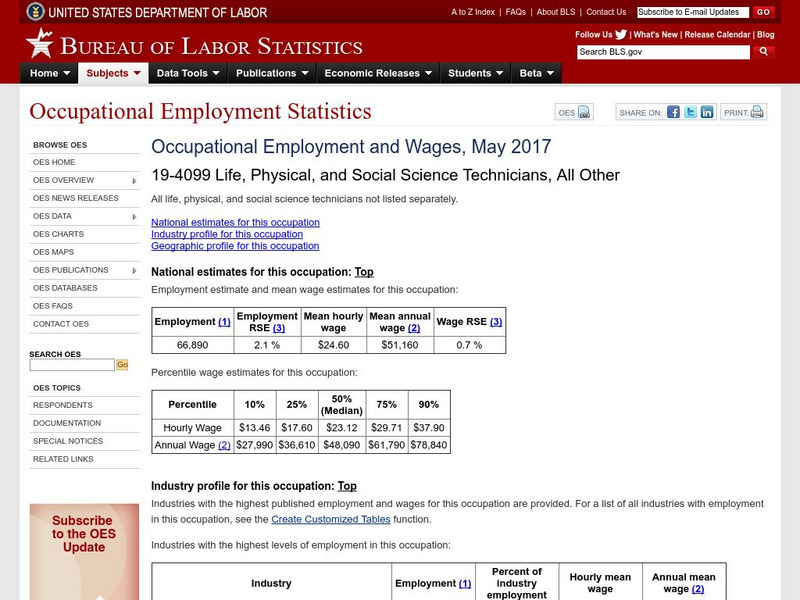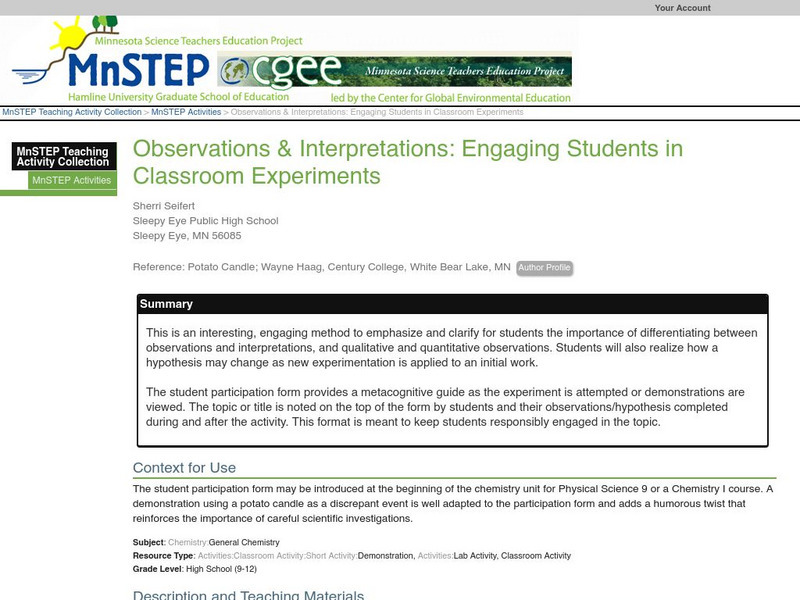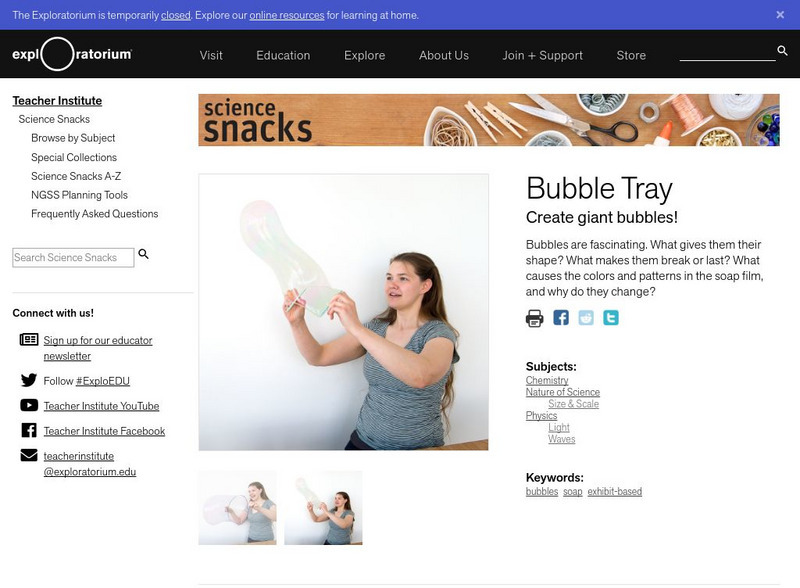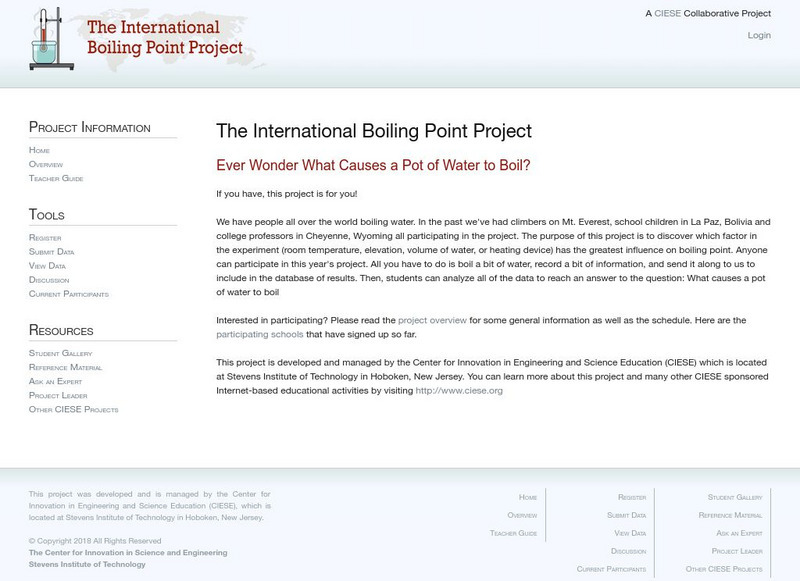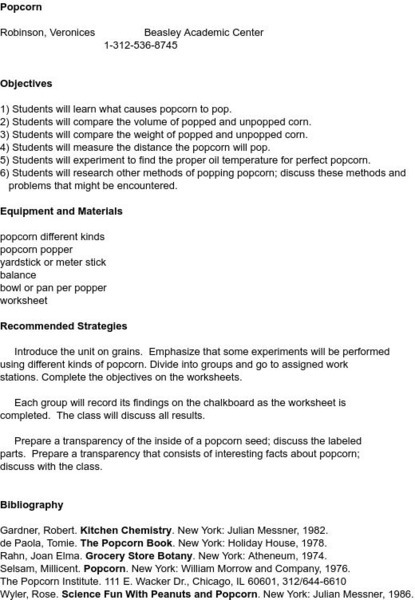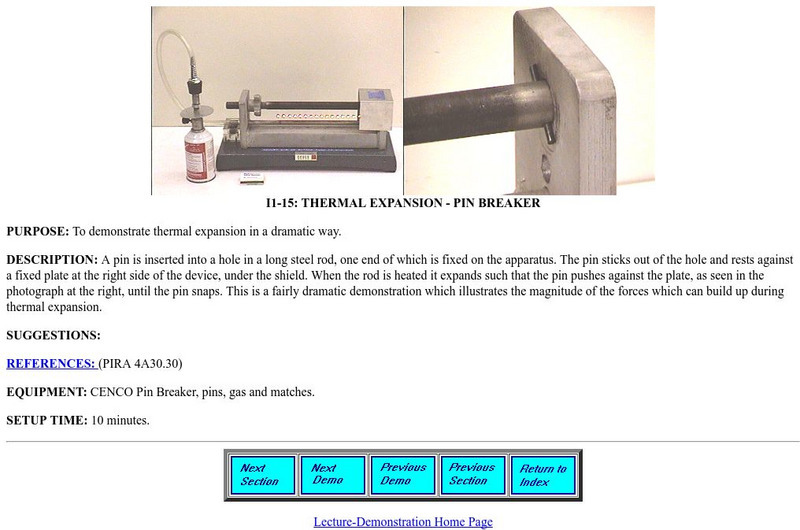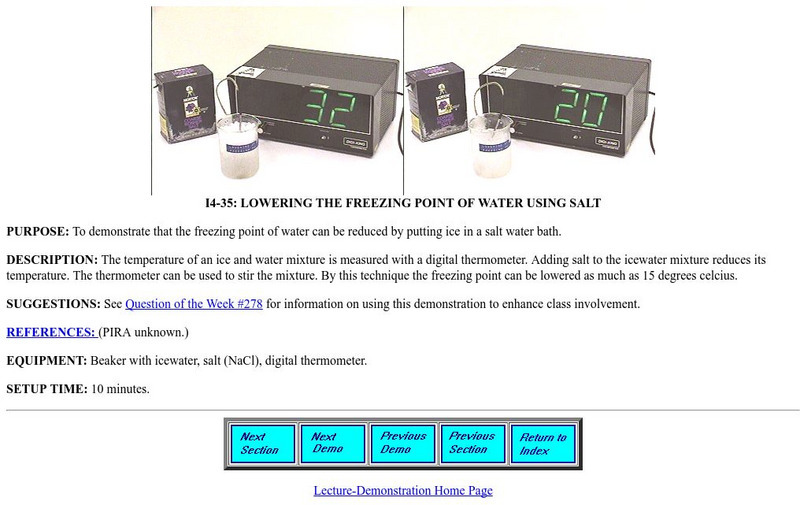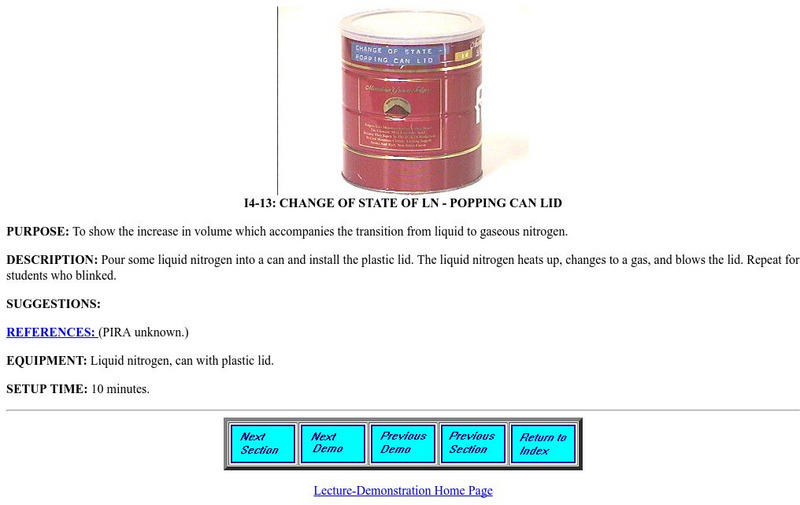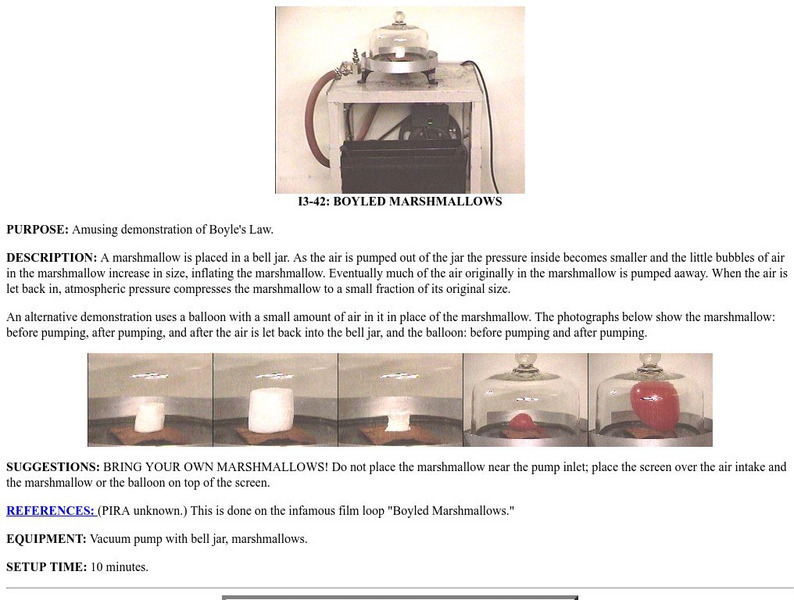Hi, what do you want to do?
Dartmouth College
Dartmouth College: Pipet
A concise but informative explanation of what a pipet is and how to use a pipet bulb.
Dartmouth College
Dartmouth College: Top Loading Balance
Use a top loading balance to weigh solid material when a precision of 0.1 is adequate. Find out how to operate this instrument in this concise site.
Dartmouth College
Dartmouth College: Centrifugation
"A centrifuge separates a heterogeneous mixture of solid and liquid by spinning it." Use this site to find out how to correctly use a centrifuge in this informative site.
US Department of Labor
Bureau of Labor Statistics: Science Technicians
The Bureau of Labor Statistics offers an overview of the whole field of science technicians, including nuclear, biological, chemical, and other types of technicians.
Science Struck
Science Struck: Make Glowing Water Without a Black Light
Presents three easy experiments where you can make water glow in the dark.
Science Education Resource Center at Carleton College
Serc: Observations & Interpretations: Engaging Students in Classroom Experiments
Use this method to emphasize and clarify for students the importance of differentiating between observations and interpretations, and qualitative and quantitative observations. Students will learn how a hypothesis may change as new...
Other
State of Oklahoma Human Capital Management Division: Laboratory Technician
A description of laboratory technician duties, along with a classification of laboratory technicians into three levels based upon experience and expertise.
Exploratorium
Exploratorium: Science Snacks: Bubble Tray
This activity allows students to create and observe giant bubbles.
Center for Innovation in Engineering and Science Education, Stevens Institute of Technology
Ciese Collaborative Projects: International Boiling Point Project
The Stevens Institute of Technology has provided this great site with information on boiling points. Classes from around the nation have been encouraged to register, conduct a boiling experiment and post their data. The object is to...
BBC
Bbc: Gcse Bitesize: Analyzing and Identifying Substances Aqa
This lesson focuses on analyzing and identifying substances. Substances can be analyzed using a variety of methods including paper chromatography, gas chromatography and mass spectrometry. After reading about the different techniques,...
Science Bob Pflugfelder
Science Bob: The Giant Dry Ice Bubble Sphere
Science Bob presents instructions for making a giant dry ice bubble sphere using common supplies.
Science Bob Pflugfelder
Science Bob: The Ultimate Bubble Solution
Science Bob presents instructions for making the ultimate bubble solution using common supplies with information on how it works.
Science is Fun
Science Is Fun: Put a Shine on It
An experiment investigating how to remove the tarnish from silver. Includes an explanation of how the silver becomes tarnished, and the chemical reaction taking place when the shine is restored.
Science and Mathematics Initiative for Learning Enhancement (SMILE)
Smile: Popcorn Is a Gas
From the Science and Mathematics Initiative for Learning Enhancement (SMILE) program. A lesson plan in which young scholars explore the pressure-temperature-volume relationships by performing a popcorn lab investigation. Intriguing....
Science and Mathematics Initiative for Learning Enhancement (SMILE)
Smile: Relationships: Pressure, Volume, and Temperature
From the Science and Mathematics Initiative for Learning Enhancement (SMILE) program. A lesson plan that centers around a lab investigating the gas laws of Boyle, Charles, and Gay-Lussac. Data is collected, analyzed and discussed.
Science and Mathematics Initiative for Learning Enhancement (SMILE)
Smile: Crystals I
From the Science and Mathematics Initiative for Learning Enhancement (SMILE) program. A lesson plan in which pupils explore the properties of crystals. Includes a variety off hands-on activities. Great for stimulating an idea for a...
University of Maryland
University of Maryland: Thermal Expansion Pin Breaker
A page from the University of Maryland Physics Lecture Demonstration Facility. Provides directions for a teacher demonstration of thermal expansion. Shows apparatus and set-up; Provides suggestions. Easily adaptable as a student project...
University of Maryland
Lowering the Freezing Point of Water Using Salt
A page from the University of Maryland Physics Lecture Demonstration Facility. Provides directions for a teacher demonstration of the effect of an ionic solute upon the freezing point of water. Shows apparatus and set-up; provides...
University of Maryland
U. Of Maryland: Change of State of Liquid Nitrogen
A page from the University of Maryland Physics Lecture Demonstration Facility. Provides directions for a teacher demonstration of the vaporization of liquid nitrogen. Shows apparatus and set-up; provides suggestions. Easily adaptable as...
University of Maryland
University of Maryland: Boiling Water by Pumping
A page from the University of Maryland Physics Lecture Demonstration Facility. Provides directions for a teacher demonstration which utilizes a Bell jar and vacuum pump to show the dependency of boiling point upon pressure. Shows...
University of Maryland
U. Of Maryland: Latent Heat: Ice to Water to Steam
A page from the University of Maryland Physics Lecture Demonstration Facility. Provides directions for a teacher demonstration of latent heat in the melting and vaporization process. Shows apparatus and set-up; provides suggestions....
University of Maryland
University of Maryland: Absolute Zero
A page from the University of Maryland Physics Lecture Demonstration Facility. Provides directions for determining the value of absolute temperature. Shows apparatus and set-up; provides suggestions. Easily adaptable as a student project...
University of Maryland
University of Maryland: Boyled Marshmallows
A page from the University of Maryland Physics Lecture Demonstration Facility. Provides directions for a teacher demonstration of Boyle's law. Shows apparatus and set-up; provides suggestions. Easily adaptable as a student project or lab...
Other popular searches
- Acid Base Chemistry Labs
- Chemistry Labs of Hydrates
- High School Chemistry Labs
- Christmas Chemistry Labs
- Thermo Chemistry Labs
- Holiday Chemistry Labs
- Introduction Chemistry Labs
- Therm Chemistry Labs
- Online Chemistry Labs
- Chemistry Labs With Candy






